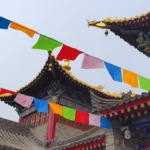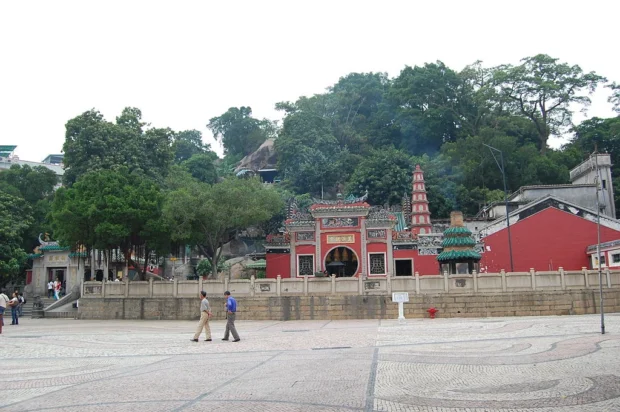Nestled in the heart of Macau, China, the A-Ma Temple stands as a living symbol of the city’s rich cultural tapestry and spiritual heritage. This ancient temple invites visitors to step into a world of history, mythology, and peaceful reverence. If you are planning to visit Macau, learning about the A-Ma Temple – its origins, how to get there, and the best moments to enjoy your visit – will make your trip truly meaningful. Nearby, you will find a variety of simple guesthouses and guest-friendly eateries offering local flavors such as pork chop buns and fresh seafood. Getting here from Macau’s city center or airport is straightforward by local bus or taxi. Whether you come by ferry from Hong Kong or from Macau International Airport, this guide will prepare you well.
Table of Contents
History and Myth of A-Ma Temple’s Origins
The story of the A-Ma Temple is wrapped in legend and deep cultural importance. Dating back to 1488 during the Ming Dynasty, the temple honors Mazu, the goddess of the sea, beloved by fishermen and sailors. According to local tale, the temple’s name “Macau” itself was inspired by the temple’s name. When Portuguese explorers arrived, they asked locals what the place was called; locals replied “A-Ma-Gau,” named after the temple, which eventually shortened to Macau. This temple is not just a place of worship but a beacon of safety and prosperity for those who depend on the sea. Walking through its several pavilions, you will feel the centuries-old connection between the city and the ocean.
Getting to A-Ma Temple: Simple Routes to a Historic Shrine
The A-Ma Temple is located in the southwestern part of Macau Peninsula, close to the waterfront. From the city center, the easiest way to reach the temple is by bus. Many bus routes, including numbers 7, 10, 12, and 25, travel close to the temple’s front gates. For those using taxis, the ride is short and affordable from the central area. Arriving from Macau International Airport, a taxi or shuttle to the city center followed by a bus trip works well.
From Ferry Terminals and Airport
If you come by ferry from Hong Kong or Zhuhai, the outer harbor ferry terminal is within easy reach by bus or taxi. The temple is less than a 15-minute drive from the terminal. From the airport, similarly, a taxi ride followed by a short bus trip ensures a smooth visit without confusion.
Best Times to Visit the A-Ma Temple
Choosing when to visit the A-Ma Temple can deepen your experience. Early morning hours, especially just after sunrise, offer a quiet atmosphere where you can enjoy the peaceful rituals and admire the soft morning light hitting the temple’s ornate roofs. Weekdays tend to be less crowded compared to weekends or public holidays when locals come to offer prayers.
For those interested in historic cultural sites surrounded by nature, Nara Park’s blend of ancient temples and gentle deer offers a peaceful continuation of exploring spiritual places beyond Macau.
Spring and autumn seasons are ideal for their comfortable temperatures and occasional soft breezes from the sea. Avoid visiting during Macau’s hot summer months if possible, as the heat can be intense and the temple grounds quite exposed.
Inside A-Ma Temple: Architecture Full of Stories
The temple complex consists of several main parts, each built to honor different aspects of Mazu’s legend and other local deities. The Gate Pavilion marks the entrance, followed by the well-known Hall of the Three Saints, which often catches visitors’ eyes with its intricate carvings and bright colors. Farther in is the Pond of Heaven, a tranquil spot where incense often fills the air.
One particularly interesting feature is the statue of Mazu herself, carved from a single piece of camphor wood. Listening to the stories behind each shrine and symbol, you will discover layers of Macau’s history mixing Taoist, Buddhist, and Confucian beliefs in one place.
To broaden your journey in Macau, consider exploring the best things to see and eat in Macau, which includes many famous landmarks and local dishes beyond the A-Ma Temple.
Visitor Tips for a Smooth Visit
- There is no need for advance reservations or tours; the temple welcomes all visitors freely during opening hours.
- Wear comfortable shoes as the temple grounds include some uneven pathways and gentle hills.
- Respect local customs: avoid loud talking and dress modestly inside the temple.
- Photography is allowed but be mindful: cameras should not be used during prayers or ceremonies.
- Small donations to maintain the temple can be made, but there is no entrance fee.
- Try to catch local offerings or festivals if your visit overlaps with traditional dates; these events bring the temple alive with music and color.
Nearby Attractions and Food to Savor
After visiting the A-Ma Temple, a short walk leads to the waterfront where you can enjoy fresh seafood and taste the famous Macanese egg tart. Local markets and quaint tea houses nearby provide an authentic glimpse into daily Macau life. For accommodation, many budget-friendly guesthouses and traditional inns are within easy reach, offering a chance to linger in the neighborhood’s calm charm.
Official Information About A-Ma Temple
For official updates, temple event schedules, and more detailed visitor guidance, refer to the temple’s homepage. This site provides the latest opening hours, special celebrations, and cultural activities that enhance your visit.
Those interested in historic city centers and vibrant marketplaces might enjoy a visit to Krakow’s Main Market Square, a lively spot showcasing centuries of Polish culture and architecture not far from bustling European hubs.

A Chinese tour guide with deep knowledge of the Far East, its traditions, and culinary secrets.
- A-Ma Temple (1387764934) by edwin.11 on Wikimedia Commons – cc by 2.0
